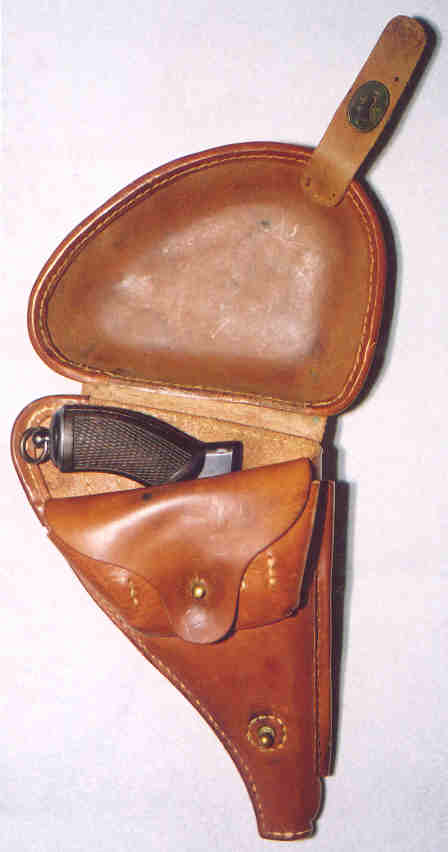Type
26 Photos (Arsenal Rework)
On

This shows the left side.

Here is a close-up of the markings on the right side
of the frame above and just forward of the grips. The top symbol is the marking
of

There are
also several markings on the butt plate around where the lanyard loop attaches.

Here is
one side of the lanyard loop.

Here are the markings on the other side.

The action breaks open using a so-called Smith &
Wesson style latch. Here it is from the side partially raised. The hammer is at
the lower right.

Here is the latch from the top (the round horizontal
bar-like thing in the middle of the photo). Above it the rear sight can be
seen. The very bottom shows the hammer.

When you
raise the latch, break open the action and lower the barrel, the extractor (the
thing sticking up out of the cylinder) raises to eject the empties.

Once it
has opened all the way, the extractor snaps back down and you are ready to
reload.
.

While the Type 26 is not considered one of the world’s
great guns, it was not that bad in comparison with many of its contemporaries
like the French M1892 “Lebel” revolver or the Russian
M1895 Nagant gas seal revolver. One of its good
features was that you could easily open up the side plate to clean or repair
the lockwork. To do this you pull down and forward on
the back of the trigger guard, which then swings downward.

Right below the screw where the action breaks open
there is a little mark where you can then pry open the side with your
thumbnail. This is similar to the French M1892 “Lebel”
revolver.

This shot
shows the lockwork inside in more detail.

This shot shows the size of the Type 26 (top) compared
to a Webley & Scott No. 2, Mark 1 revolver, which fired a .38 S&W round
somewhat similar to, but not interchangeable with, the 9mm Japanese revolver
cartridge. The Type 26 was long since obsolete by WWII and was a second-line
weapon for the Japanese forces, but the British introduced this Webley & Scott during that conflict!

Here it is
snuggled into its holster.

To see Type 26 accessories, please
click here: t26accessories.htm
Click here to go back to the Type 26 Photo
Gallery: t26gallery.htm
Click here to go back to the main page: Nambu World Home Page
Last updated: July 8 ,
2005. All contents are copyright Teri unless otherwise specified and may not be
used elsewhere in any form without prior permission.